
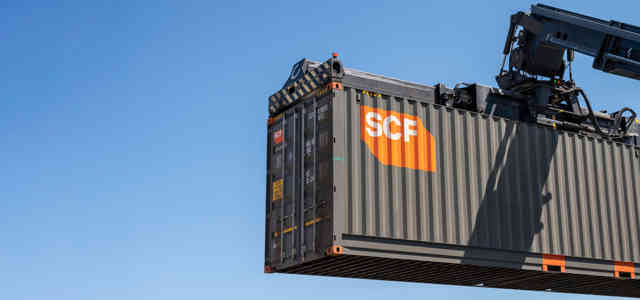
News & Articles
Shipping Containers for Sale & Hire Price List
How much does a shipping container cost?
It’s often the first question our customer service team receives, quickly followed by, ‘does that include shipping?’
Buying a shipping container is a big decision particularly for a first time buyer, with so many variables impacting the average price of a shipping container, it can be overwhelming! This includes the various shipping container sizes and types available, their container grade (specific condition) or whether they would be better suited to hiring a container instead of buying.
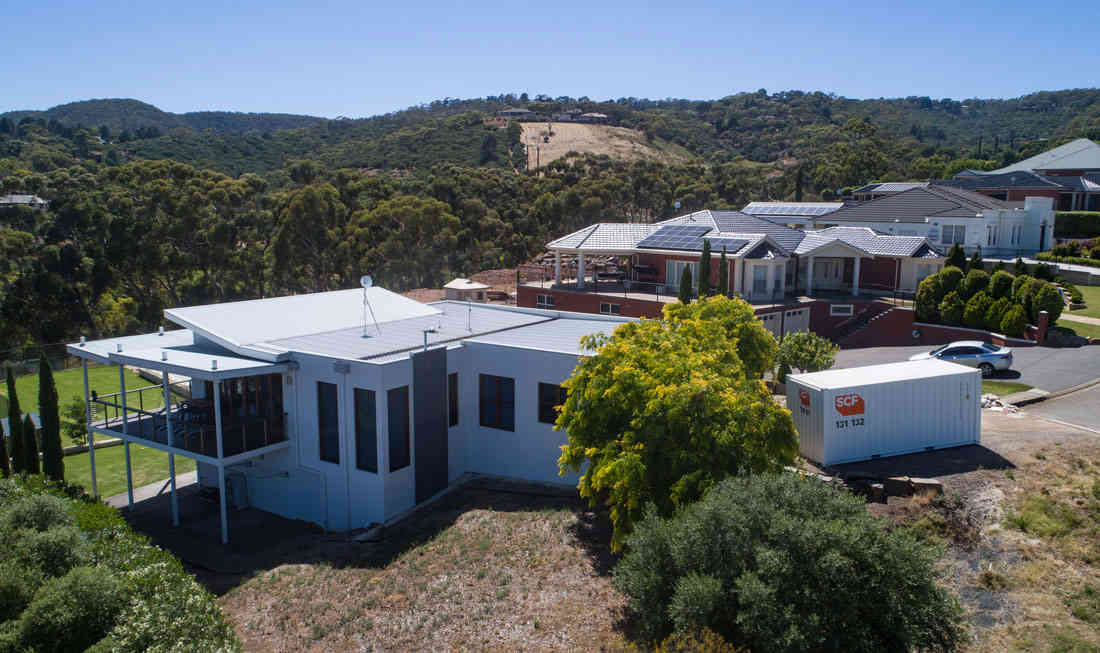
This shipping container price list guide covers:
Should you Hire a shipping container?
Hiring a shipping container can represent a much more affordable option than buying. Depending on the container type, you could be hiring for as little as $2.75 inc. GST a day. The container will be a new or near new build with all the latest features.
If you're ready to hire a shipping container or want more information on this, visit Hire A Shipping Container.
Should you Buy a shipping container?
Buying a shipping container is a good idea if you plan to have it long-term. Depending on the type of container you’re interested in, you could be looking at anywhere between $3,630 - $15,000+ inc. GST.
Buying is also a good idea if you plan to make modifications to the container yourself, or have a container modified to suit your specific needs before it is delivered .
If you're ready to buy a shipping container or want more information on this, visit Shipping Containers for Sale.
Not sure whether you should hire or buy a shipping container? Take a look at our guide, Should I Hire Or Buy a Shipping Container for all the information you need.
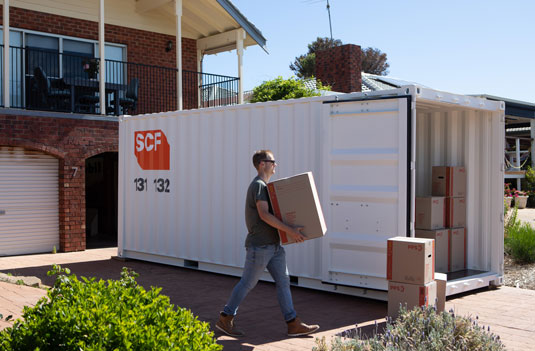
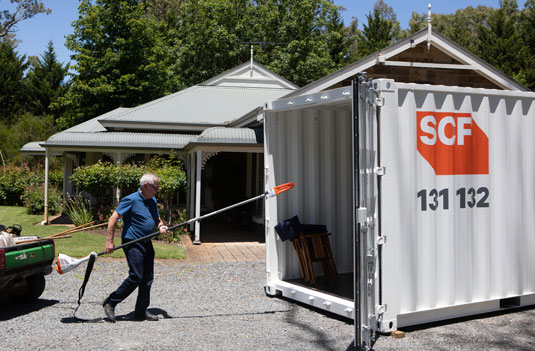
What Drives Shipping Container Price
So what are the key factors that drive the price of shipping containers?
Which type of Shipping Container?
Most people are familiar with a 20ft shipping container, the most common container available in the market today. But there are many other container types that are suited to specific applications. Some are similar to the 20ft container, whilst others are very different with unique features.
General Purpose Shipping Containers
For onsite storage, general purpose shipping containers are available in a wide range of container sizes with various features. This type of container has standard features such as a wooden floor, is wind and water tight and pest and vermin proof but can vary depending if it’s second hand or new.
For space constrained or small sites, smaller containers are available, in 8ft and 10ft variants. They can even fit neatly within workshops or warehouses. People often think that smaller containers are cheaper than 20ft units, but this is not the case. Due to corner castings and reduced global production volumes as a result of less demand for small containers, these prices are often higher than 20ft container prices.
High Cube Shipping Containers
In addition to the standard size 20ft or small container, a high cube container is available, which comes with an additional foot of height to increase the internal volume. There is also a side opening option for the 20ft container, which grants easier access for the user but tends to have a higher price due to the additional doors.
If you need to store a large volume of goods, a 40ft shipping container or a 40ft high cube container is the best option. This container is 12m long. It is one of the largest storage containers available for onsite storage.
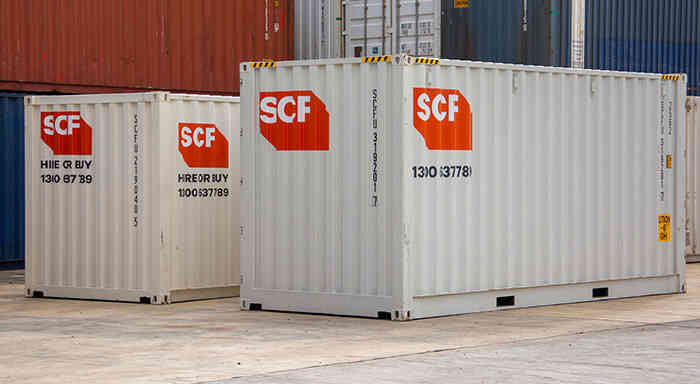
Lockbox
A lockbox, which is designed to prevent theft, is an option on general purpose or high cube shipping containers. This steel ‘sleeve’ sits over a padlock to restrict bolt cutter access or leverage with crowbars and the like. Depending on the goods inside and the location of your container, a lock box may be worth the extra money. Most of our general purpose hire containers are fitted with a lockbox at no extra cost.
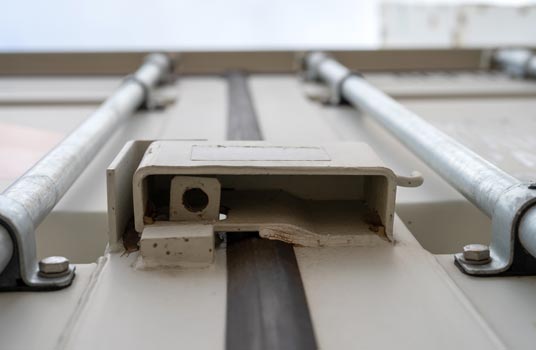
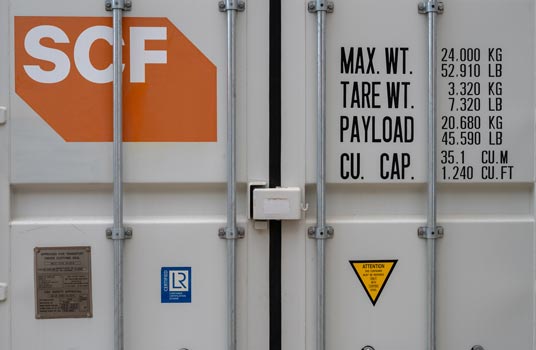
Site Sheds
Site sheds come with many more features than general purpose shipping containers. They are designed to comfortably and safely house people for a range of specific applications.
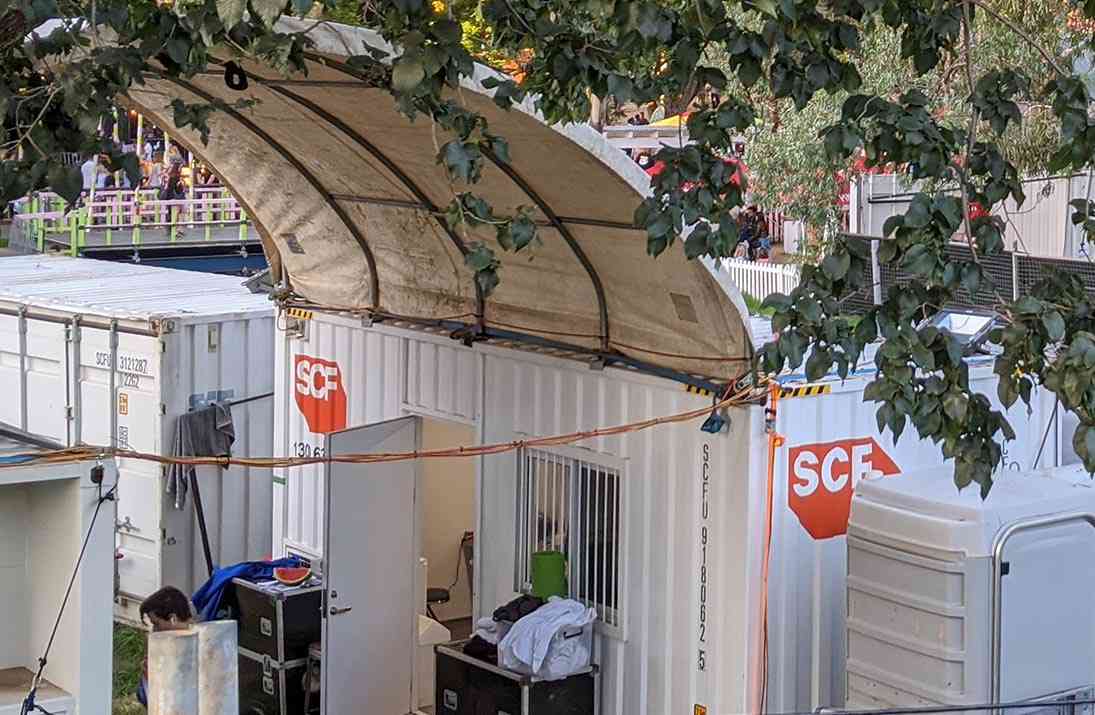
These containers may come with certain features that make them suitable as portable buildings, including:
- Personal access doors with locking handles
- Windows with fly screens and security mesh
- Hard wearing vinyl floor
- Rock wool insulation
- Split system reverse cycle air conditioning
- Hot and cold water
- Stainless steel kitchenette
- Internal lighting
- Smoke detectors
- Furniture
- His and hers toilets
The additional cost associated with each of these features, plus the greater complexity in design and construction, attributes to a container that costs more than a general purpose container.
Dangerous Goods Containers
Dangerous Goods Containers are specialised for the safe onsite storage of chemicals, liquids and powders. In order to comply with strict Australian Standards, these containers come with a set of highly specialised features including:
- A bund to contain spills
- Vents for air circulation,
- Drain valves to safely clean up spills; and
- Emergency exits
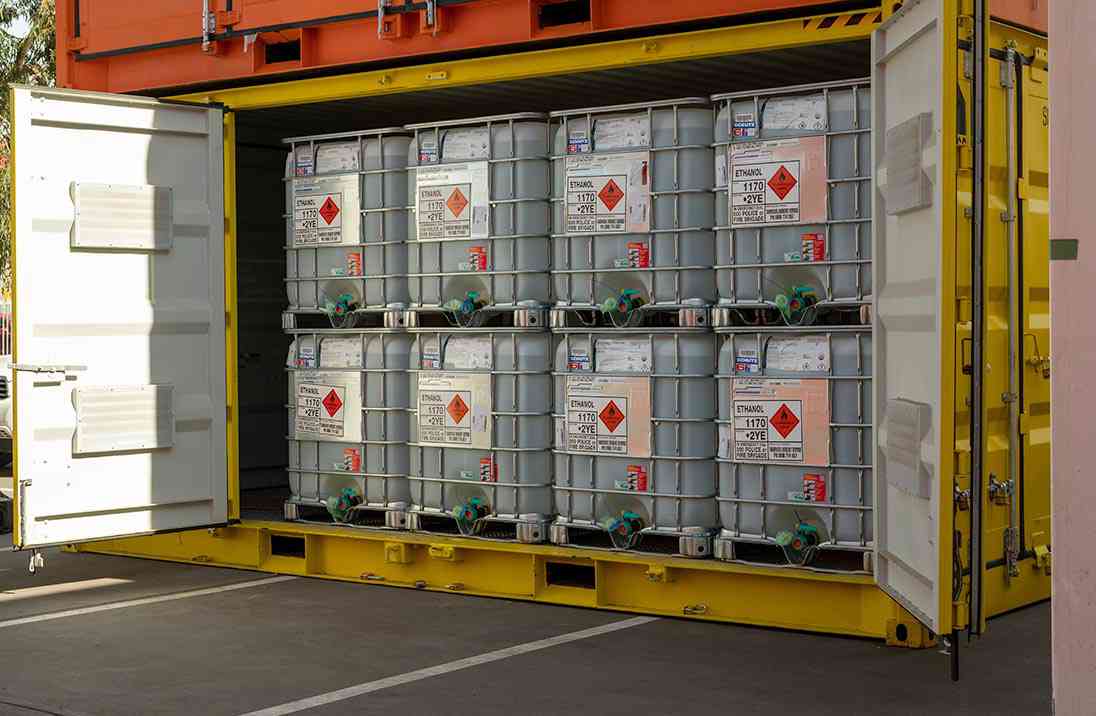
These specific features are exclusive to Dangerous Goods Containers. Some of them, like the bund, are also quite significant for the design of the container. With demand for Dangerous Goods Containers much lower than General Purpose containers and the higher level of safety features to meet Australian Standards, the price is more expensive. Hiring a Dangerous Goods Container is a great option to reduce costs.
Refrigerated containers
Refrigerated shipping containers are complex units with a range of technologically advanced features that are designed to store goods at precise temperatures for extended periods of time.
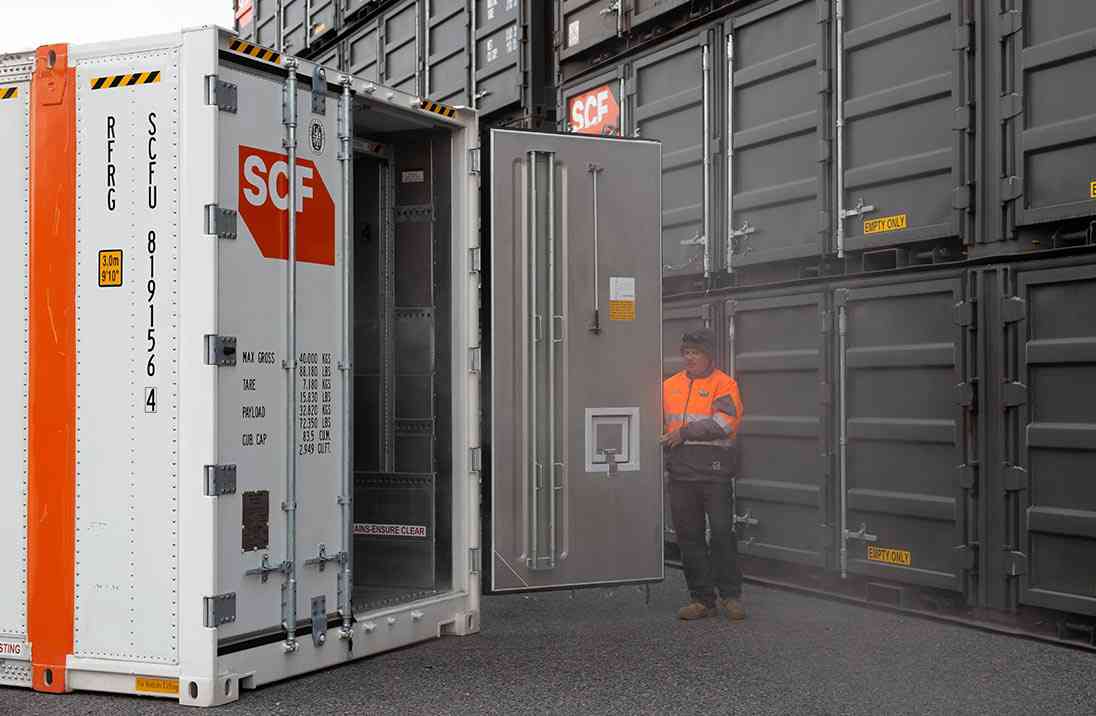
The motor component, which drives the cool air, paired with the superior thermal insulation means that refrigerated containers can be significantly more expensive than general purpose containers however, hiring a 20ft Cool room is an affordable option.
Shipping Container Grades Matter
Just like a car, the condition of a shipping container is critical to its sale price.
It is cheaper to buy secondhand shipping containers than new builds.
Second Hand Shipping Containers
Container grades are critical for determining second hand container pricing. Just like second hand cars, every used shipping container is different.
Second hand shipping containers are cheaper than new build containers, but their price can still vary drastically.
Some come with more features, which drives the price up. Whilst others have been in circulation for a decade or more and have seen more wear and tear. Ultimately there will be a cost effective second hand container that will fit your requirements.
See our Container Grades Guide for information on used containers and the grading system that is used to help you understand the condition of a container, which affects the price.
The highest price is reserved for new containers. These are purpose built to be delivered in Australia without having been used for any form of transport or storage. They will have almost no marks or scratches, except possibly minor ones that may be incurred in its first transit.
Put simply, better quality containers come at a premium price. A new container will look better, last longer and cost you more. However there are some very good used or second hand containers that are wind watertight and vermin proof. They may have some external marks, but they are certainly more affordable.
When buying a shipping container, your supplier should be able to provide detailed, current images of the container that is being quoted on. Because SCF sells containers that are in stock in one of our depots, we are able to provide current photos of all second hand shipping containers, so you know what you are getting.
Supply and demand
Similar to other markets, supply and demand market forces impact container prices. Popular container types with limited stock availability may command a price premium.
A good example of this is 10ft containers compared to 20ft containers. 20ft containers are produced in abundance due to the international demand for shipping cargo, so there is often stock available. They are also one of the cheaper containers to make.
10ft containers are less common because:
- Less 10ft containers are manufactured than 20ft containers; and
- Demand for 10ft containers is high.
So when stock is available, demand drives the price up. They also have as many corner castings as 20ft units and steel doors, which make up a significant amount of the production cost.
Exchange rates and steel price fluctuations
Shipping containers are generally built overseas. Whether a shipping container company is importing them into Australia, or a trader with existing logistics relationships is buying containers second hand once they arrive, balance sheets are calculated using the USD.
When the AUD weakens against the USD, the cost of containers increases. This is because pricing is roughly tied to the replacement cost of each container.
For example, if a new container costs $3,000 USD delivered, and the exchange rate is at parity, then customers could expect to pay just over $3,000 for a container. However as that exchange rate weakens (where US$1 = AU$1.40), customers could expect to pay just over $4,200.
Global steel price fluctuations can also influence the price of new build shipping containers as the major component of the container.
Your Location
Your location may contribute to the total cost of your container.
Large logistics hubs, like Brisbane and Melbourne, have active ports that sees thousands of containers delivered weekly through international shipping lines. This is supported by a large concentration of companies that are involved in intermodal transport, with head offices, depots and distribution centres. By virtue of this, containers for sale and hire are more readily available at any one time, which keeps prices down.
In a smaller city without bustling ports, shipping containers are less easy to come by. Without a ship bringing in cargo containers by sea, either direct from factory, or with stock to be sold to a container company at a later date, containers will need to be transported. The cost of transporting containers on road or rail between states can be anywhere between $800 up to $10,000+. If demand is high, and less stock is available, prices can be higher compared to cities like Melbourne or Brisbane.
If you’re dealing with a supplier and not a container trader, your location will likely have less impact on price because they will have greater access to a larger pool of containers.
However the transport component of the container from depot to your door will be higher if you live outside of metro areas. If you’re unsure, speak with someone at SCF who will be able to provide an accurate quote for the cost of shipping container delivery from the depot to your door.
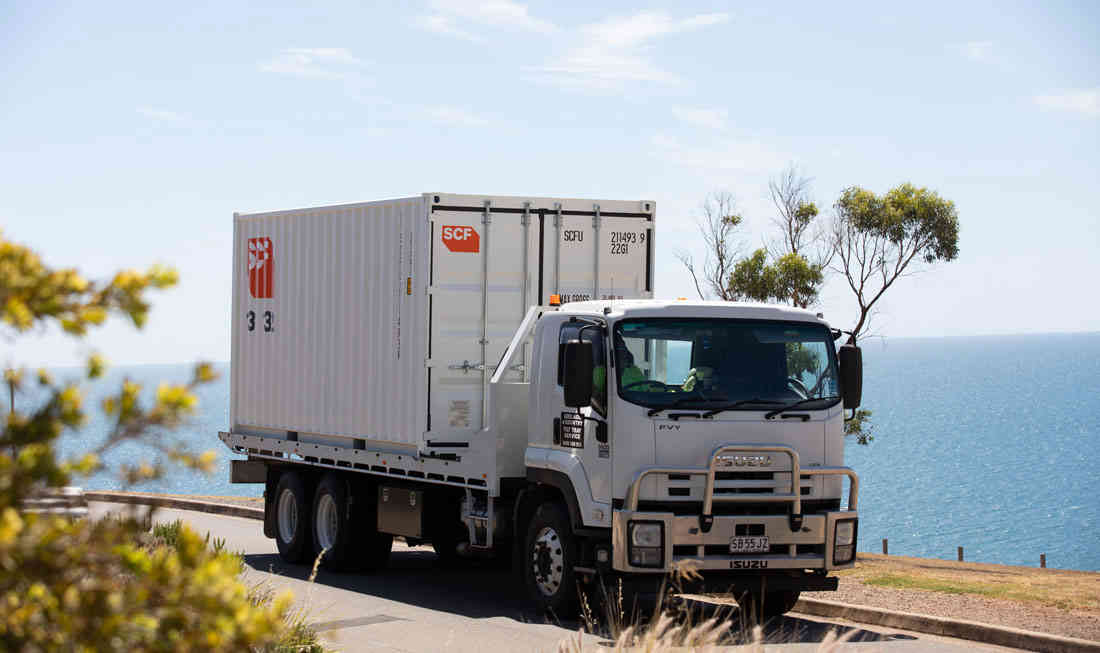
Features
The more features a container has, and the more complex and costly those features are, the more a container will cost. As a base, your container should be wind and water tight. It should also be vermin proof, unless you are buying a container for scrap metal or can repair holes yourself.
Additional features on a container might include a lockbox or side doors, which cost more to manufacture than an end door container with no added security.
Corner Castings - The Secret Sauce
One of the most expensive components on any General Purpose shipping container is the corner castings, the corner points used by reach stackers (large forklifts capable of accessing container stacks), to pick up and move containers.
These also allow containers to be stacked safely in depot and onsite. The Institute of International Container Lessors (IICL) states that Containers can be stacked as high as 8 tall, following a strict set of guidelines. However SCF maintains a maximum of 5 containers. This is due to the space available in our depots and the ability to safely, easily and efficiently move containers.
Smaller isn’t always cheaper
A commonly held misunderstanding is that smaller containers are the cheapest. However, this is not the case. They have the same amount of corner castings as 20ft and 40ft units. As highlighted earlier, corner castings make up a significant cost of every container.
Smaller containers are also less common, whilst demand remains relatively constant. With less product available in the market, suppliers can charge a premium.
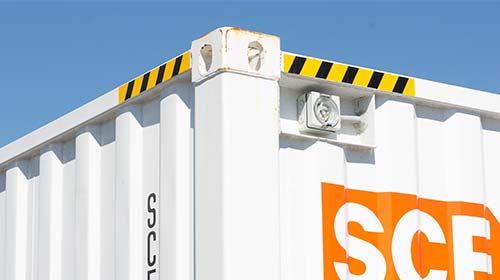
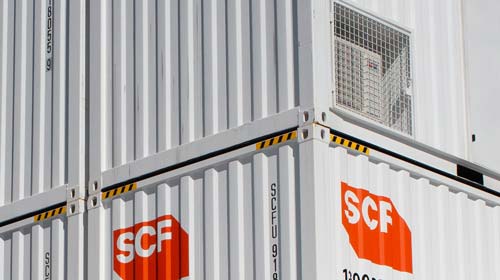
Without the ability to stack, it is unlikely that shipping containers would have become so popular.
Some of the largest cargo ships can carry over 21,000 twenty foot equivalent units in stacks up to 8 containers high! That is a lot of containers! Stacking also enables container companies to safely store a large volume of stock in a relatively small space.
Container Modifications
For those who want an existing container modified, in addition to the price of the container, additional cost will be incurred for the parts and labour required to complete the work.
Consider a roller door, or personal access door. Provisions have to be cut into the side of the container, framed and then the door installed. All whilst ensuring the structural integrity of the container is not compromised.
Thankfully a range of container suppliers have dedicated teams who are experienced in carrying out this work, so they can get it done safely, efficiently and to a high standard. Talk to us if you are considering container modifications.
Prices Can Change Quickly
In a volatile economic environment, the exchange rate can fluctuate greatly. Paired with spikes in demand that reduce stock levels, customers can see the average price of a shipping container change on a weekly basis.
This is the primary reason why it is important to speak to us about your specific needs so we can provide a definitive price. Once you complete a quote, a customer service team can present the containers in stock that match your needs, along with an accurate price that includes shipping.
So if you want to find out the specific price of a container, complete an online quote and someone from our customer service team will follow up with the details you want.
Shipping Container Price List
We have compiled a Shipping containers price guide for those who are trying to decide between buying or hiring a shipping container. It indicates how much you could expect to pay. *Prices subject to location and availability.
How much does it cost to buy a shipping container?
All prices include GST.
Shipping Container for Sale Price List
| Shipping Container Type | New | Used |
| 8ft Container | $4,785 - $5,610 | $3,850 - $4,840 |
| 10ft Container | $5,610 - $7,480 | $4,620 - $6,820 |
| 20ft Container | $4,785 - $7,150 | $2,585 - $6,160 |
| 20ft High Cube Container | $6,490 - $9,350 | $3,850 - $7,920 |
| 20ft Side Opening Container | $13,200 - $16,390 | $6,050 - $10,450 |
| 40ft High Cube Container | $9,790 - $12,650 | $3,850 - $8,690 |
POA - Price on application. We cannot provide a price indication for these due to their limited supply within the market. Contact us today and our Customer Service Team will be able to provide an indication of price.
How much does it cost to hire a shipping container?
Hiring Is A More Affordable Option
Is the cost of buying a shipping container out of your budget? Then you should consider hiring. This is a much more affordable option and guarantees you have access to newer containers in better condition.
Prices listed are per day, per unit. All prices include GST.
Shipping Container for Hire Price List
Prices listed are per day, per unit. All prices include GST.
| Type | Cost Per Day |
| 8ft Container | $2.75 - $5.50 |
| 10ft Container | $2.75 - $5.50 |
| 20ft Container | $3.90 - $5.50 |
| 20ft High Cube Container | $6.10 - $8.80 |
| 20ft Side Opening Container | $6.60 - $9.90 |
| 40ft High Cube Container | $7.15 - $12.10 |
Subscribe & stay informed
Receive the latest in products, trends, news, events and tips.